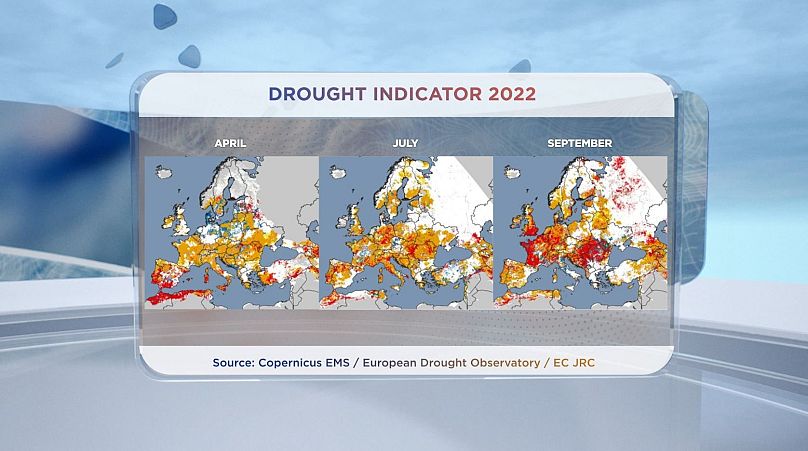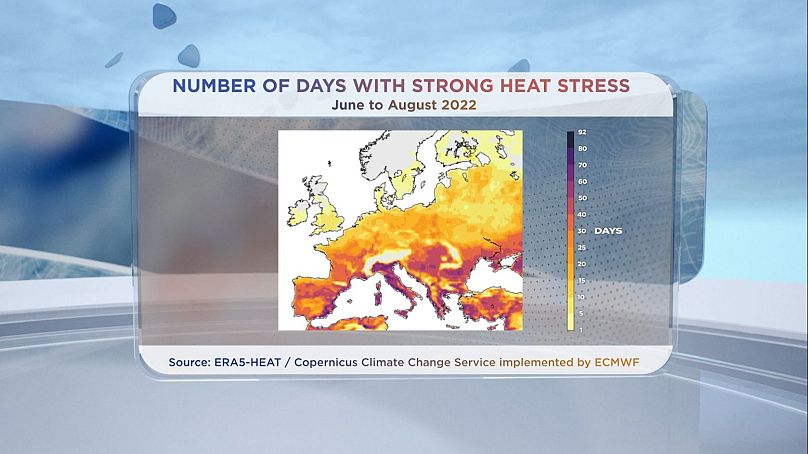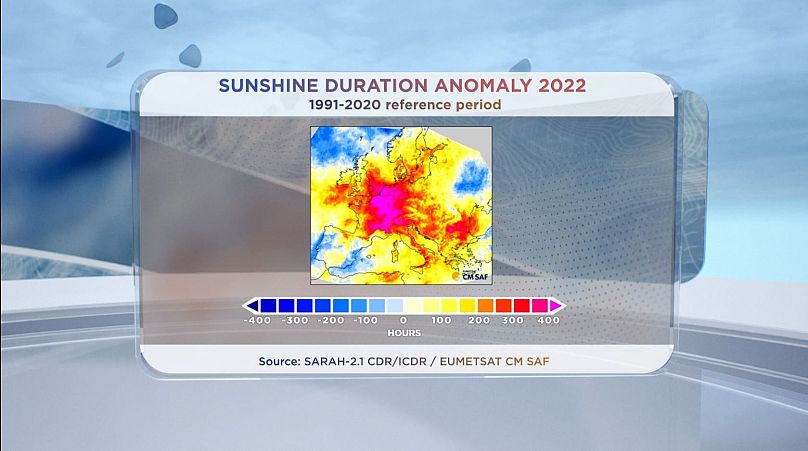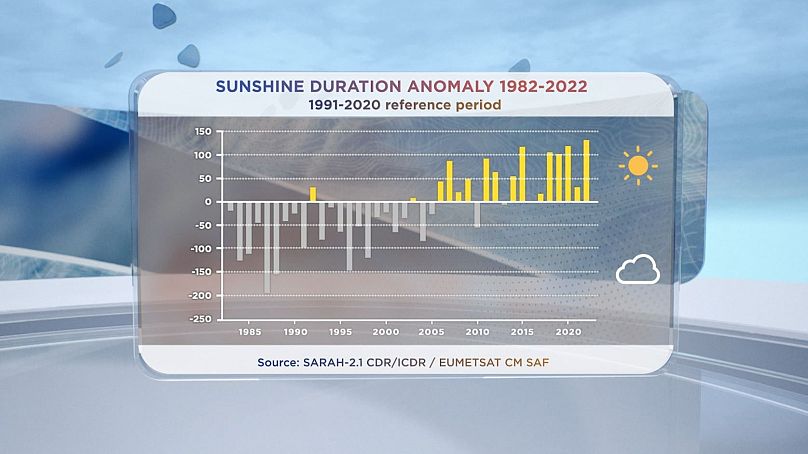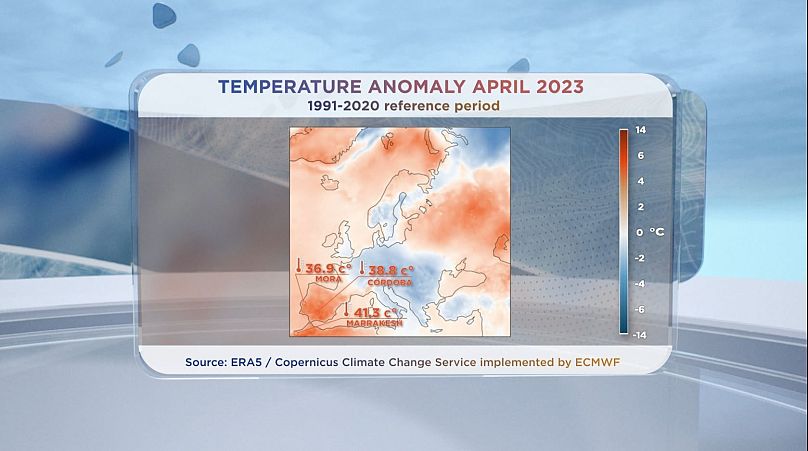The recent Copernicus European State of the Climate report for 2022 painted a picture of a continent that's getting ever hotter, drier and sunnier. Why is this? And what are the implications for our health?
The 2022 annual climate data has just been released by the Copernicus Climate Change Service. The figures confirm that last year, Europe went through its hottest summer on record.
Extreme heat and widespread drought
2022 was marked by extreme heat and widespread drought. Drought Indicator maps from April, July and September illustrate how widespread the issue was.
Are we going to have a repeat of that situation this year? Climate scientist Julien Nicolas believes it's possible:
"We are seeing this taking place as we speak in Spain," he says. "Where you have extreme temperatures, combined with very dry conditions that led to well above average temperatures. So this is one example where the scenario from 2022 is repeating."
A rise in heat stress
2022 saw a marked rise in the number of days with what's called 'strong heat stress'. The darker the colour is on this map, the more days of heat stress there were.
In 2022 many parts of Europe experienced 40 days a year or more with temperatures with a 'feels like' rating of 32° to 38°. And it's becoming a concern for doctors.
"It can trigger heart attacks, strokes. It can lead to dehydration, to renal failure," says Nathalie Nidens, medical doctor at the German Alliance On Climate Change And Health.
She says people who are vulnerable should look for advice on how to adapt: "It's also possible that certain medications and food restrictions need to be adjusted because some medications can actually make you more vulnerable to heat and therefore also pose a greater risk. So sometimes dosages need to be adjusted."
Europe is getting sunnier
Alongside heat and drought, another key trend from 2022 is that Europe is getting sunnier.
Last year, the continent had its highest sunshine duration on record - the places in red and fuschia on this map had hundreds of hours of extra sunshine last year.
There are many complex reasons why there's more sunshine in Europe, but, in summary, the main causes are a change in weather patterns and cleaner air.
"What we see in a warming climate is that we have more of the situations where high pressure areas are blocking the movement of low pressure areas," says Rob Roebeling, climate product expert at Eumetsat. "And because of that, a high pressure area can be associated with more sunny conditions.
"That is one side of the story. And the other side is that we have less pollution during the last 20 years."
This graph of sunshine duration anomalies reveals that Europe has been getting sunnier since the 1980s.
Europe's solar power sector is already growing, and this is a further boost.
"You can see the yields and therefore also the economics of solar installations increase quite dramatically if the amount of sunny days increases, certainly in the mid-seasons," says Dries Acke, Policy Director at Solar Power Europe. "So that will only have a positive impact on the business case for solar."
Last month's data
On a global level, April 2023 was 0.3° Celsius above the 1991-2020 average. In Europe, it was a mixed picture. It was cooler from the UK to Turkey, but much warmer around the Iberian Peninsula.
There were a string of all-time high temperatures for April in the western Mediterranean.
Córdoba in Spain hit 38.8°, Mora in Portugal rose to 36.9° and Marrakesh in Morocco peaked at 41.3°, all records for the month.












